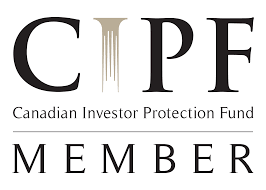Can you save for the future and get a tax break? TFSAs and RRSPs offer tax advantages that can help you achieve your long-term financial goals.
Ideally, your savings plan should include both types of accounts, but if you must choose one over the other, it’s important to understand their differences. Here is our simple guide to understanding the two types of registered accounts here in Canada.
A Quick Comparison
| RRSP | TFSA | |
| Need earned income to Contribute | ✔ | ✘ |
| Tax-deductible contributions | ✔ | ✘ |
| Tax-free withdrawals | ✘ | ✔ |
| Age limit for making contributions | ✔ | ✘ |
The main difference is the timing of taxes. An RRSP lets you defer taxes – an advantage if your current tax rate is higher now than it will be in retirement. Whereas with a TFSA, you’ve already paid tax on your contribution – an advantage because you dont have to pay taxes when you withdraw funds.
When To Use an RRSP
With an RRSP, your contributions are tax deductible. If you make $100,000 a year, but add $10,000 to your RRSP, you’ll be taxed as if you made $90,000. If your income tax rate is around 40%, you will be getting a refund for ~$4,000 when you file your taxes.
The idea is to contribute to your RRSP when your tax bracket is high, and withdraw from your RRSP when your tax bracket is low (i.e. in retirement).
You should generally invest in an RRSP if:
- You are making over $90,000 a year and are investing for retirement.
- You are making more than $50,000 per year and…
… you dont expect your income to grow significantly.
… you are investing towards your first home and plan to use your RRSP for a Home
Buyers Plan (HBP).
… you are investing towards your education and plan to use your RRSP for a
Lifelong Learning Plan (LLP).
When To Use a TFSA
With a TFSA, your contributions are made with after tax dollars. Because you’ve already paid taxes, you can take money out at anytime – tax free.
You should invest in a TFSA if:
- You are investing towards an objective that is sooner than retirement like a car, home, wedding, vacation etc.
- You are investing for retirement and are making less than $50,000
- You are investing for retirement, are making more than $50,000, but expect your income to go up significantly. This is to take advantage of the tax deduction when you are at a higher tax bracket.
Can You Save More With an RRSP or a TFSA?
That depends on your individual circumstances, tax situation and when you plan to take money out.
We recommend checking out our TFSA vs. RRSP Savings Calculator to get a better idea of how each account can help you achieve your unique financal goals.







